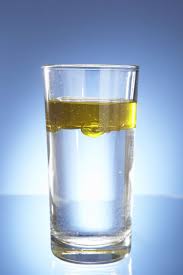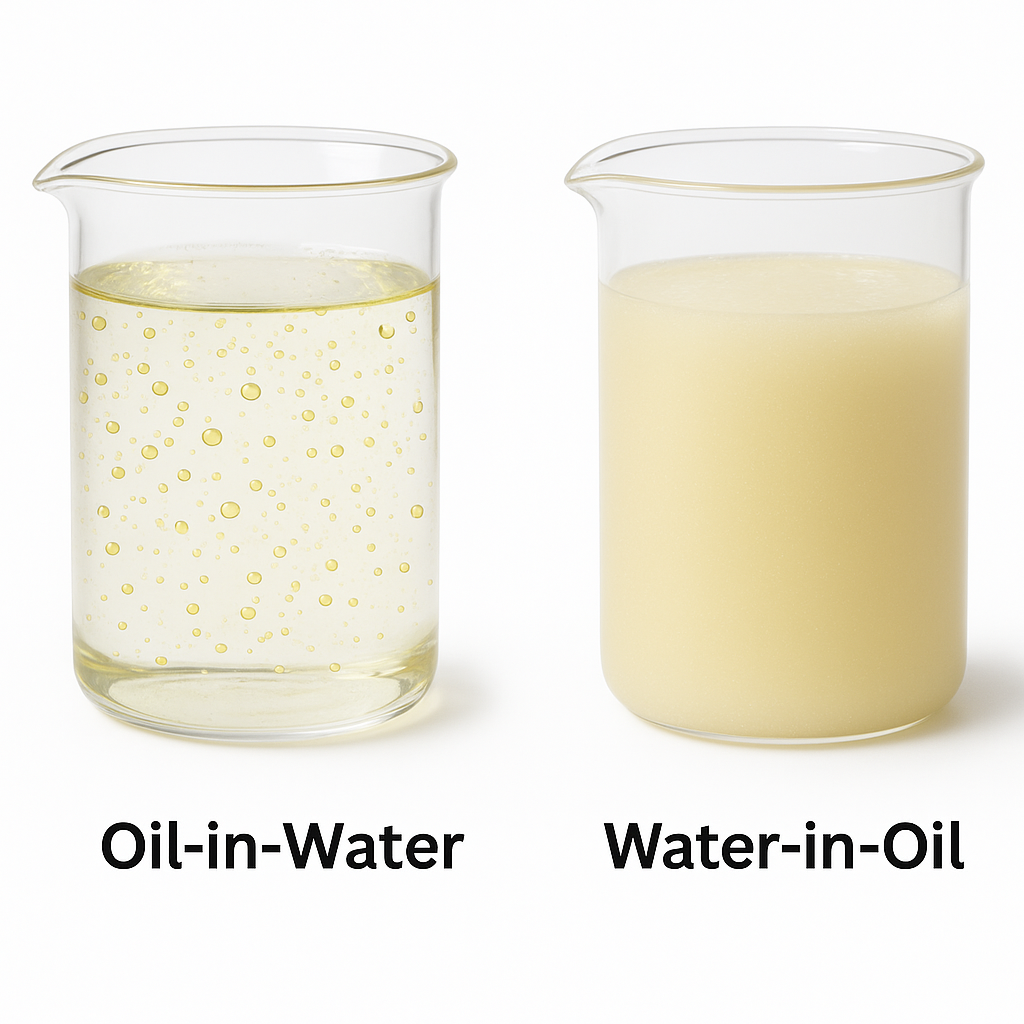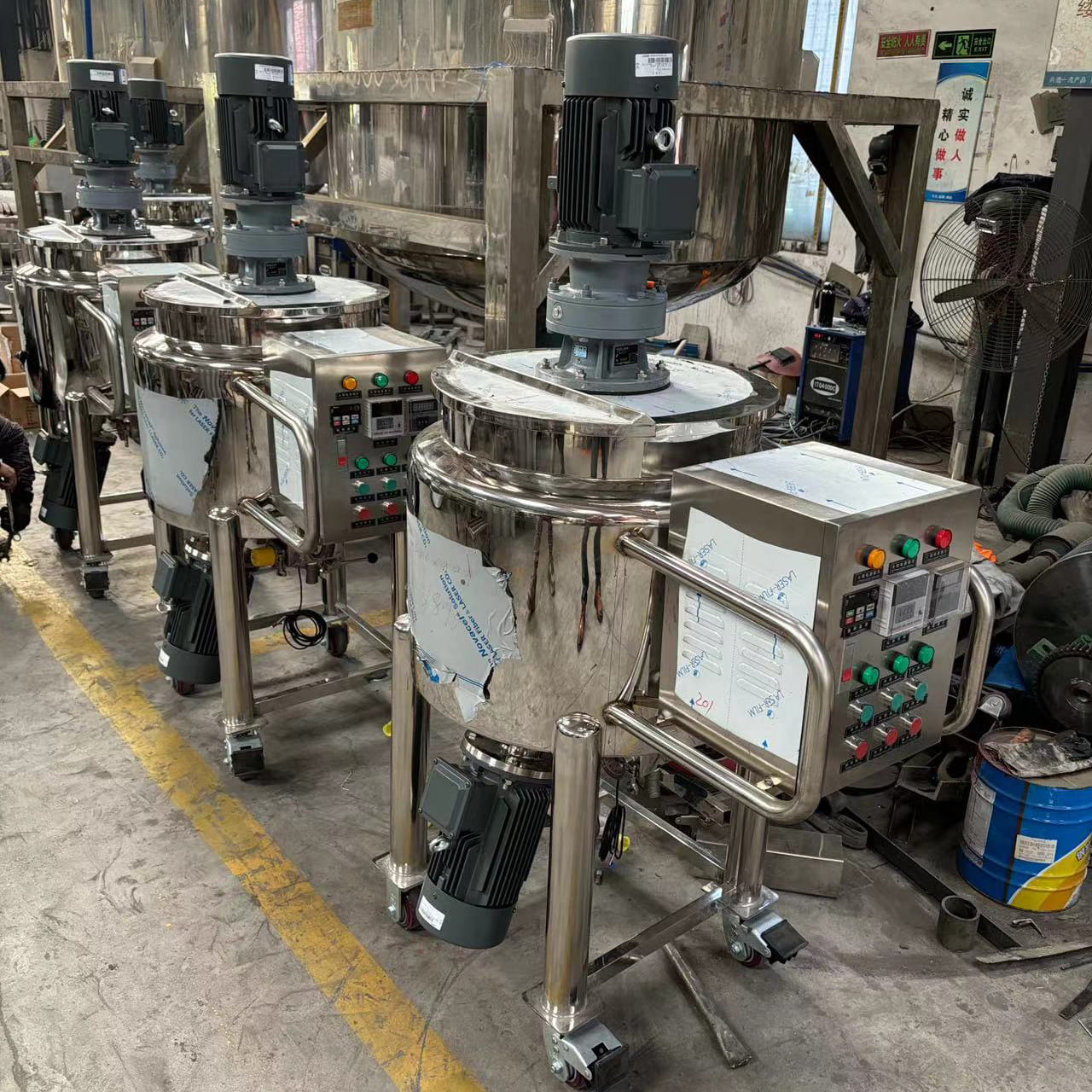Water in Oil Emulsion: Meaning, Real-Life Examples, and How to Fix It
YUANYANG explains water-in-oil emulsions: causes, real-world examples, and practical fixes using Vacuum Emulsifier and Vacuum Homogenizer solutions. Learn troubleshooting tips, equipment selection, and process controls to restore product stability.
- Does oil have water in it?
- What happens when you mix water and oil
- Emulsifier for oil and water mixture
- Oil-in-water vs. water-in-oil emulsion
- Emulsify oil and water
- What is emulsification
- Process of emulsification: how does emulsification work
- Emulsification of oil and water: 5 Common examples
- Emulsion solution: How to fix a broken emulsion
- Emulsification equipment for oil and water stability
- Emulsifying oil and water: Summary
Does oil have water in it?
At the dew point, oil is 100 percent dissolved in water. Fog becomes cloudier when cooled by condensation. The polar chemistry of the base stock and oil additions affects the dew point temperature.
Do oil and water mix together?
Oil and water do not mix. They are supposedly immiscible. This is because water is a polar molecule, i.e., one end of it is negatively charged, and the other is positively charged. The molecules of water stick to each other since the positive side of a water molecule is attracted to the opposite side of another water molecule. Due to their polarity, they have a small positive charge at one end and a slight negative charge at the other end. The charges allow the molecules to form hydrogen bonds with polar molecules. Nevertheless, oil molecules are not able to form hydrogen bonds. Water molecules will cluster together in a container of oil, and oil molecules will cluster together in a container of water, leaving two layers.

- · Water is a polar molecule (hydrophilic).
- · Oil is nonpolar (hydrophobic).
What happens when you mix water and oil
When you add water to oil, they do not mix. Have you ever shaken water and oil? And so you know that they did mix. That blending, however, soon ceases! After a couple of minutes, you may re-examine the container to find that the water and oil have separated. Is able to make oil and water mix over long periods of time. Simply add an emulsifier and stir.
Emulsifier for oil and water mixture
The emulsifiers form physical barriers that do not allow the droplets to aggregate. Emulsifiers are surfactants that have a hydrophilic (polar or water-loving) head group and a hydrophobic (nonpolar or oil-loving) tail. There are two emulsifiers in the egg yolks, lecithin and cholesterol, which assist in forming a mixture of oil and water, respectively. Also, soap. It draws water on one end and fat on the other. It acts like this when you wash your hands.
Oil-in-water vs. water-in-oil emulsion
The distinction between oil-in-water and water-in-oil emulsions is that the water droplets are suspended in oil, whereas the oil droplets are suspended in water. The other difference between the two is that there are many emulsifiers required to give the stability and only a single emulsifier required to give the strength of the other.

Emulsify oil and water
What is emulsification
Emulsification is the dispersing of one liquid into another immiscible liquid. It may be produced mechanically (high-energy) or chemically (low-energy process). During digestion, emulsification occurs in the small intestine by breaking it into smaller globules of fat. The salts are secreted and stored in the gallbladder.
Process of emulsification: how does emulsification work
Bile salts break down the smaller globules of fat and form a milky emulsion. These emulsified fats are broken down into fatty acids and glycerol by pancreatic lipase. This is what makes the emulsification of fat important since digestion and absorption of lipids is contingent on emulsification.
Emulsification of oil and water: 5 Common examples
The emulsification process in cosmetics: O/W emulsions are applied in moisturizing cosmetics and food products such as milk, mayonnaise, and vinaigrette since they contain low oil concentrations. They are non-greasy, non-occlusive, absorb water, and can be combined with water. These emulsions involve water as the dispersion medium, and o/w emulsifiers prevent the oil droplets from dispersing in the liquid.
In food processing emulsification is especially useful in products intended to be used on dry or sensitive skin, including butter, margarine, cold cream, and cod liver oil. Common emulsifiers include sorbitan stearate, polyglyceryl oleate, lecithin, sorbitan monooleate, and lanolin.
- · Egg yolk: has the emulsifying agent lecithin.
- · Butter: fat emulsion in water.
- · Mayonnaise: an oil-in-water emulsion.
- · Espresso crema: a water and coffee oil emulsion
- · Milk: water-in-oil emulsion
- · Margarine: oil-in-water emulsion
- · Ice cream: water-in-oil and air emulsion
Emulsion solution: How to fix a broken emulsion
When the emulsion separates because of a difference in density, the lighter oil droplets move to the surface and creaming occurs. Sedimentation is based on the same principle, frequently in the water-in-oil emulsions where the denser water droplets settle at the bottom of the emulsion.
Emulsifiers refer to substances that are incorporated into a mixture to prevent separation. This can be repaired by adding a small quantity of the broken emulsion to a clean bowl, adding a teaspoon of lemon juice (or water), and whisking to form a new stable emulsion. Add the rest of the broken sauce when the emulsion has been established as you continue to whisk.
Emulsification equipment for oil and water stability
You can prevent a mixture from separating by using emulsifier equipment:
Homogenization is a process of dispersion of solid particles in a liquid or emulsification of two immiscible liquids. The benefits are that the products become more viscous and have a longer shelf life, homogeneity, consistency, stability, flavor, and color. Smaller particles can easily and readily combine with the particles of a different substance. It also allows the particles to remain well mixed longer.
Emulsifying oil and water: Summary
An emulsion is a substance that is formed by throwing water and oil together, and small droplets of one liquid are dispersed over the other. They have thicker bonds as opposed to oil-in-water emulsion. You now have a guide on how to fix a broken mixture using easy methods and the right equipment.

Ultimate Guide to Commercial Reverse Osmosis Systems 2026

Ultimate Storage Tank Guide for 2026: Selection & Innovations

Ultimate Guide to Filling Machine 2026 : Application & Selection

Emulsion Mixer Mastery: Industrial High-Performance Use

Ultimate Guide: Differences Between Homogenizer & Emulsifier
Ink Jet Printer
Can the dater printer spray all directions?
Yes, the spraying nozzle of the expiry date printer can be adjusted to all directions.
Cosmetic Making Machine
Why vacuum system is necessary?
In the mixing process of cosmetic emulsifier, it is necessary to eliminate bubbles and prevent oxidation to ensure the quality of the mixture.
In a vacuum environment, there are following advantages:
⦁ Improve mixing efficiency
In a vacuum environment, the surface area of the mixture increases, and the interaction force between the substances will also increase, thus speeding up the mixing speed.
⦁ Prevent oxidation
In a vacuum environment, oxygen cannot enter the mixture, so it can effectively prevent the oxidation of the mixture.
⦁ Reduce bubbles
In a vacuum environment, the bubbles in the mixture will be drawn out, so that you can get a bubble-free mixture.
Medicine
Is the equipment suitable for small-batch production?
Yes, Yuanyang’s equipment is also suitable for small-batch production. Our equipment can adjust to batch sizes based on production requirements, while maintaining consistent product quality.
Chemicals
Can Yuanyang's chemical equipment be customized?
Yes, we offer customization services for our equipment to meet your specific production needs.
Liquid Mixing Tank
How to cool down fast? When the products is finished,the temperature is high, it takes a long time to get back to room temperature!
⦁The fast way is by using an external chiller to convey the cooling medium (usually cold water) through the pipe into the inner jacket,through water-circulation system to cool;
⦁Another way is directly continuously taking cooling medium (usually tap water) into the inner jacket of the agitator tank from inlet, and drain it from outlet to take away the heat.
Leave a message
Have any questions or concerns about our products? Please leave us a message here, and our team will get back to you promptly.







 Scan QR Code
Scan QR Code
Facebook
YouTube
LinkedIn
Whatsapp: +8613434139712
Guangzhou Yuanyang Machinery